Apache

Brief Synopsis
Cast & Crew
Robert Aldrich
Burt Lancaster
Jean Peters
John Mcintire
Charles Buchinsky
John Dehner
Film Details
Technical Specs

Synopsis
In 1886, Geronimo, chief of the Chiricahua Apaches, finally surrenders to the U.S. Cavalry. As he carries a white flag to the victors, however, Massai, a young warrior who refuses to accept surrender, shoots at both the flag and the assembled soldiers. Massai is soon subdued, and as cuffs are placed on his hands, Indian fighter Al Sieber scoffs, "You're not a warrior any more; you're just a whipped Injun." Geronimo, Massai and the other warriors are separated from the women, children and old men of the tribe and herded onto a train bound for Florida. Near St. Louis, the train stops for water, and a photographer takes a picture of the Apaches. As the photographer focuses on Weddle, an Indian hater who falsely claims to have captured Geronimo, Massai quietly slips from the train and begins running. Massai is alternately baffled and fascinated by city life in St. Louis, but he is forced to flee when a group of citizens sees his handcuffs. Massai moves on until, in Oklahoma territory, he meets a Cherokee Indian who owns his own farm. When Massai angrily accuses him of living like a white man, the Cherokee explains that after years of fighting and running, his people finally realized that rather than living on a reservation, the Cherokee must grow their own food and live in peace with the white man. Massai looks skeptical, but as he works his way back to the mountains of New Mexico, the idea begins to take hold. The new chief, Santos, and his daughter Nalinle are surprised when Massai appears in their dwelling. After listening to his plan of negotiating a "warrior's peace" with the white man, as the Cherokee had done, Nalinle tells Santos that Massai will again breathe life into the tribe. Santos, disheartened and muddled from drinking too much aguardiente, binds and gags Nalinle and then turns Massai over to Sieber. Believing that Nalinle loves a traitorous Apache named Hondo, Massai assumes that she helped her father and vows revenge on them both. Weddle is again ordered to transport Massai and several other Apache men to Florida, but this time, Weddle gives his prisoners an opportunity to run away as an excuse to shoot them all. Massai catches him off guard, however, and the Indians escape. Consumed by hatred, Massai launches a private war against white civilization, destroying telegraph lines, causing cattle stampedes and damaging the fort. The Apache kidnaps Nalinle, forcing her to travel for days without food or water. When Sieber and the soldiers approach, Nalinle warns Massai and he lets her go. Nalinle wants to remain with Massai, but he angrily orders her to return to the reservation. Exhausted and bleeding, she crawls up a hillside after him, whereupon he finally accepts her love. Sieber and his soldiers later find signs of the couple's marriage: Nalinle's beads placed carefully on a rock pile. This deeply disappoints Hondo, who swears that she soon will be a widow. Some time later, Nalinle informs Massai that she is pregnant, and the two decide to spend the winter in the western mountains. Although the mountains offer them refuge from their pursuers, it is bitterly cold, and there is little food. Nalinle tries to persuade Massai to end his war and plant the Cherokee corn, but he protests that because he is the last remaining Apache warrior, he must continue to fight. In the spring, the couple moves to warmer ground, and Nalinle steals more seed corn from the nearby trading post. Angry at first, Massai finally joins her in planting the corn. By this time, the Cavalry wants to call off the search for Massai, but Sieber insists on tracking the Apache. When Sieber learns that an Indian stole seed corn from the local merchant, he contacts the fort for reinforcements. Massai sees the troops coming and returns to the hut just as Nalinle goes into labor. She urges him to go out and die a warrior's death, whereupon he leaves the hut and charges some of the soldiers. Shot in the side, Massai takes refuge among the corn stalks. Sieber crawls in after him, but Massai tricks him and points a gun at his head. Just then, a baby cries, and Massai is mesmerized by the sound. Slowly he returns to the hut, throws down his rifle, and goes in. The colonel remarks that no Apache has ever grown corn before, adding that the war has been called off. Regretfully, Sieber replies that "it was the only war we had."

Director

Robert Aldrich
Cast
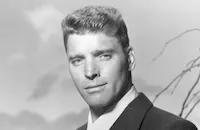
Burt Lancaster

Jean Peters
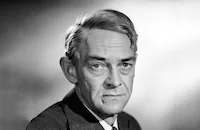
John Mcintire

Charles Buchinsky
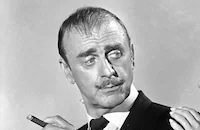
John Dehner
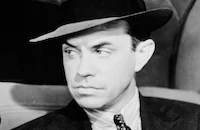
Paul Guilfoyle
Ian Macdonald

Walter Sande
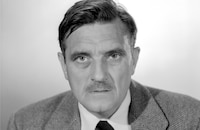
Morris Ankrum
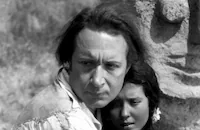
Monte Blue
Ta-wah-yi
Crew
Jack R. Berne
Leon Chooluck
Stanley Cortez
Alan Crosland Jr.
Leonard Doss
Harold Hecht
Joseph Kish
Ernest Laszlo
Edward Mann
Harry Maret
Norma
Maurice De Packh
David Raksin
Ruby Raksin
Nicolai Remisoff
Robert Schiffer
Katherine Shea
Sid Sidman
Jack Solomon
Janie Statz
Lillian Ugrin
James R. Webb
W. Lloyd Young
Lee Zavitz

Photo Collections
Videos
Movie Clip



Trailer
Film Details
Technical Specs

Articles
Apache
Wellman's story told of Massai, derived from a historical figure who waged a last stand against the encroaching U.S. Army and white civilization in the late 1880s. Upon the surrender of Geronimo, Massai is captured after attempting to disrupt the peace negotiations between the Apaches and the U.S. government. Placed on a train transferring him to a Florida reservation, he escapes and makes the arduous trek back to his homeland to be reunited with his squaw, Nalinle, but her father betrays him and he's again captured and sent to Florida. This time his escape is marked by a thirst for vengeance not only against the white people but also against all Indians like Nalinle's father who collaborate with them. Fleeing with his pregnant woman into the hills, Massai prepares for a final showdown with the Army. But at the last moment, he hears the cries of his newborn child and decides to live in peaceful coexistence with his enemies.
To bring the story to the screen, Lancaster and Hecht chose writer James R. Webb and director Robert Aldrich, a Hollywood maverick and outspoken liberal himself, considered by Hecht to be unusually gifted at creating intense psychological drama and one who could make a project look more expensive than it actually cost. Thanks to Lancaster's consistent box office clout, United Artists gave the star the sweetest deal it had made with anyone since Charles Chaplin, taking a smaller distributor cut of the picture and giving Hecht-Lancaster $12 million to produce seven films, five of which would star the actor. The studio balked, however, when it became apparent the production team was going way over budget and was planning to take Massai's story to the most tragic possible end. The original finale was going to have the warrior, walking away from the soldiers to a life of peace with his family, shot in the back. Although that ending might have been truer to the fate of most of the Apache, especially those who were openly rebellious against white authority, UA feared audiences would not appreciate seeing one of their favorite stars die. They put considerable pressure on the production, and the ending was changed, much to Lancaster and Aldrich's everlasting regret.
Whether it can be credited to the "happy" ending or not, Apache proved to be a major hit, the top-grossing Western of the year and a confirmation not only of Lancaster's commercial appeal but his ability as a producer who could match himself to the right vehicle at the right time. The film opened a month after the U.S. Supreme Court ruled against segregation in Brown v. Board of Education, and its success vindicated Lancaster's assertion that it had been produced "to make a broader statement on the injustice of racism." And nobody seemed to mind that the warrior Apache had blue eyes. Lancaster, Hecht, Aldrich, and Webb immediately re-teamed for another Western, Vera Cruz (1954). This time no one interfered when Lancaster decided to play - with considerable relish - a bad guy who is gunned down in the end by top-billed co-star Gary Cooper.
Director: Robert Aldrich
Producer: Harold Hecht
Screenplay: James R. Webb, based on the novel by Paul Wellman
Cinematography: Ernest Laszlo
Editing: Alan Crosland Jr.
Production Design: Nicolai Remisoff
Original Music: David Raksin
Cast: Burt Lancaster (Massai), Jean Peters (Nalinle), John McIntire (Al Sieber), Charles Bronson (Hondo, as Charles Buchinsky), John Dehner (Weddle), Monte Blue (Geronimo)
C-88m. Closed captioning.
by Rob Nixon

Apache
TCM Remembers Charles Bronson - Sept. 13th - TCM Remembers Charles Bronson this Saturday, Sept. 13th 2003.
Turner Classic Movies will honor the passing of Hollywood action star Charles Bronson on Saturday, Sept. 13, with a four-film tribute.
After years of playing supporting roles in numerous Western, action and war films, including THE MAGNIFICENT SEVEN (1960, 8 p.m.) and THE DIRTY DOZEN (1967, 1:15 a.m.), Bronson finally achieved worldwide stardom as a leading man during the late 1960s and early 1970s. TCM's tribute will also include THE GREAT ESCAPE (1963, 10:15 p.m.), Bronson's second teaming with Steve McQueen and James Coburn, and will conclude with FROM NOON TILL THREE (1976, 4 a.m.), co-starring Jill Ireland. TCM will alter it's prime-time schedule this Saturday, Sept. 13th. The following changes will take place: 8:00 PM - The Magnificent Seven (1960)10:15 PM - The Great Escape (1963)
1:15 AM - The Dirty Dozen (1967)
4:00 AM - From Noon Till Three (1976) Charles Bronson, 1921-2003
Charles Bronson, the tough, stony-faced actor who was one of the most recognizable action heroes in cinema, died on August 30 in Los Angeles from complications from pneumonia. He was 81.
He was born Charles Buchinsky on November 3, 1921 in Ehrenfeld, Pennsylvania, one of fifteen children born to Lithuanian immigrant parents. Although he was the only child to have graduated high school, he worked in the coalmines to support his family until he joined the army to serve as a tail gunner during World War II. He used his money from the G.I. Bill to study art in Philadelphia, but while working as a set designer for a Philadelphia theater troupe, he landed a few small roles in some productions and immediately found acting to be the craft for him.
Bronson took his new career turn seriously, moved to California, and enrolled for acting classes at The Pasadena Playhouse. An instructor there recommended him to director Henry Hathaway for a movie role and the result was his debut in Hathaway's You're in the Navy Now (1951). He secured more bit parts in films like John Sturges' drama The People Against O'Hara (1951), and Joseph Newman's Bloodhounds of Broadway (1952). More substantial roles came in George Cukor's Pat and Mike (1952, where he is beaten up by Katharine Hepburn!); Andre de Toth's classic 3-D thriller House of Wax (1953, as Vincent Price's mute assistant, Igor); and De Toth's fine low-budget noir Crime Wave (1954).
Despite his formidable presence, his leads were confined to a string of B pictures like Gene Fowler's Gang War; and Roger Corman's tight Machine Gun Kelly (both 1958). Following his own television series, Man With a Camera (1958-60), Bronson had his first taste of film stardom when director Sturges casted him as Bernardo, one of the The Magnificent Seven (1960). Bronson displayed a powerful charisma, comfortably holding his own in a high-powered cast that included Yul Brynner and Steve McQueen. A few more solid roles followed in Sturges' The Great Escape (1963), and Robert Aldrich's classic war picture The Dirty Dozen (1967), before Bronson made the decision to follow the European trail of other American actors like Clint Eastwood and Lee Van Cleef. It was there that his hard, taciturn screen personae exploded in full force. In 1968 alone, he had four hit films: Henri Verneuil's Guns for San Sebastian, Buzz Kulik's Villa Rides, Jean Herman's Adieu l'ami which was a smash in France; and the classic Sergio Leone spaghetti Western Once Upon a Time in the West.
These films established Bronson as a huge box-office draw in Europe, and with some more stylish hits like Rene Clement's Rider on the Rain (1969), and Terence Young's Cold Sweat (1971) he soon became one of the most popular film stars in the world. It wasn't easy for Bronson to translate that success back in his homeland. In fact, his first few films on his return stateside: Michael Winners' Chato's Land, and The Mechanic (both 1972), and Richard Fleischer's Mr. Majestyk (1973), were surprisingly routine pictures. It wasn't until he collaborated with Winner again for the controversial Death Wish (1974), an urban revenge thriller about an architect who turns vigilante when his wife and daughter are raped, did he notch his first stateside hit. The next few years would be a fruitful period for Bronson as he rode on a wave of fine films and commercial success: a depression era streetfighter in Walter Hill's terrific, if underrated Hard Times (1975); Frank Gilroy's charming offbeat black comedy From Noon Till Three (1976, the best of many teamings with his second wife, Jill Ireland); Tom Gries tense Breakheart Pass; and Don Siegel's cold-war thriller Telefon (1977).
Sadly, Bronson could not keep up the momentum of good movies, and by the '80s he was starring in a string of forgettable films like Ten to Midnight (1983), The Evil That Men Do (1984), and Murphy's Law (1986, all directed by J. Lee Thompson). A notable exception to all that tripe was John Mackenzie's fine telefilm Act of Vengeance (1986), where he earned critical acclaim in the role of United Mine Workers official Jack Yablonski. Although he more or less fell into semi-retirement in the '90s, his performances in Sean Penn's The Indian Runner (1991); and the title role of Michael Anderson's The Sea Wolf (1993) proved to many that Bronson had the makings of a fine character actor. He was married to actress Jill Ireland from 1968 until her death from breast cancer in 1990. He is survived by his third wife Kim Weeks, six children, and two grandchildren.
by Michael T. Toole
TCM Remembers Charles Bronson - Sept. 13th - TCM Remembers Charles Bronson this Saturday, Sept. 13th 2003.
Quotes
Why did you come back, Massai?- Nalinle
This is where I belong.- Massai
Is it? Is this where you plan to die?- Nalinle
Only a warrior chooses a place to die. I am no longer a warrior.- Massai
I must hunt with the bow again. I may not be back tonight.- Massai
You will come back?- Nalinle
You know I would not leave my rifle.- Massai
You call that life? If an Apache cannot live in his home mountains like his fathers before him, he is already dead!- Massai
You have a woman and yet you carry the water?- Massai
Some of the white man's ways are hard.- Clagg
Even a hawk is an eagle among crows.- Santos
Trivia
Notes
The working title of this film was Bronco Apache. The picture opens with the following written prologue: "This is the story of Massai, the last Apache warrior. It has been told and re-told until it has become one of the great legends of the Southwest. It began in 1886 with Geronimo's surrender." The first part of the film is based on the historical surrender of Geronimo, chief of a band of Chiricahua Apaches, to U.S. Gen. Nelson Miles on September 3, 1886. Following the surrender, the U.S. government violated its agreement and transported nearly 450 Apache men, women and children, some of whom had had no part in Geronimo's escape, from the San Carlos Reservation to Fort Marion and Fort Pickens in Florida.
Although a Hollywood Reporter production chart lists Phil Van Zandt, Morris Ankrum, David Hoffman, John Dehner, Frank Ferguson and Johnny McGough in the cast, their participation in the released film has not been confirmed. According to a March 16, 1956 letter written by Robert Aldrich and contained in the Aldrich Collection of the DGA, Aldrich noted that a considerable amount of the social comment in the film was eliminated. According to a modern source, Aldrich wanted to end the film with the U.S. Cavalry shooting Massai in the back but United Artists favored a more peaceful finale. Aldrich filmed both endings, but in the final print, Massai remains unharmed and lives happily ever after.
According to a New York Times news item, production was delayed for one month due to injuries suffered by Burt Lancaster in a riding accident while on location in Sonora, CA. Other location scenes were filmed in Sedona, AZ, along the CA-NV state border and at Burro Flats, Solemit Canyon, Vasquez Rocks and the Agoura Ranch in CA. Charles Buchinsky, who played the role of "Hondo," adopted the name Charles Bronson shortly after this film was released. According to a November 1960 Daily Variety news item describing a 1957 law suit filed on behalf of cinematographer Stanley Cortez, Cortez was fired from the picture and replaced by Leonard Doss. The court ruled that Cortez was entitled to partial pay for his work on the film. The film was ranked twenty-third in Variety's list of "1954 Box Office Champs." For information about films featuring Al Sieber, a real-life Cavalry scout, for Arrowhead.

Miscellaneous Notes
Released in United States 1994
Released in United States Summer July 1954
Released in United States 1994 (Shown in New York City (Walter Reade) as part of program "Apocalypse Anytime! The Films of Robert Aldrich" March 11 - April 8, 1994.)
Released in United States Summer July 1954














